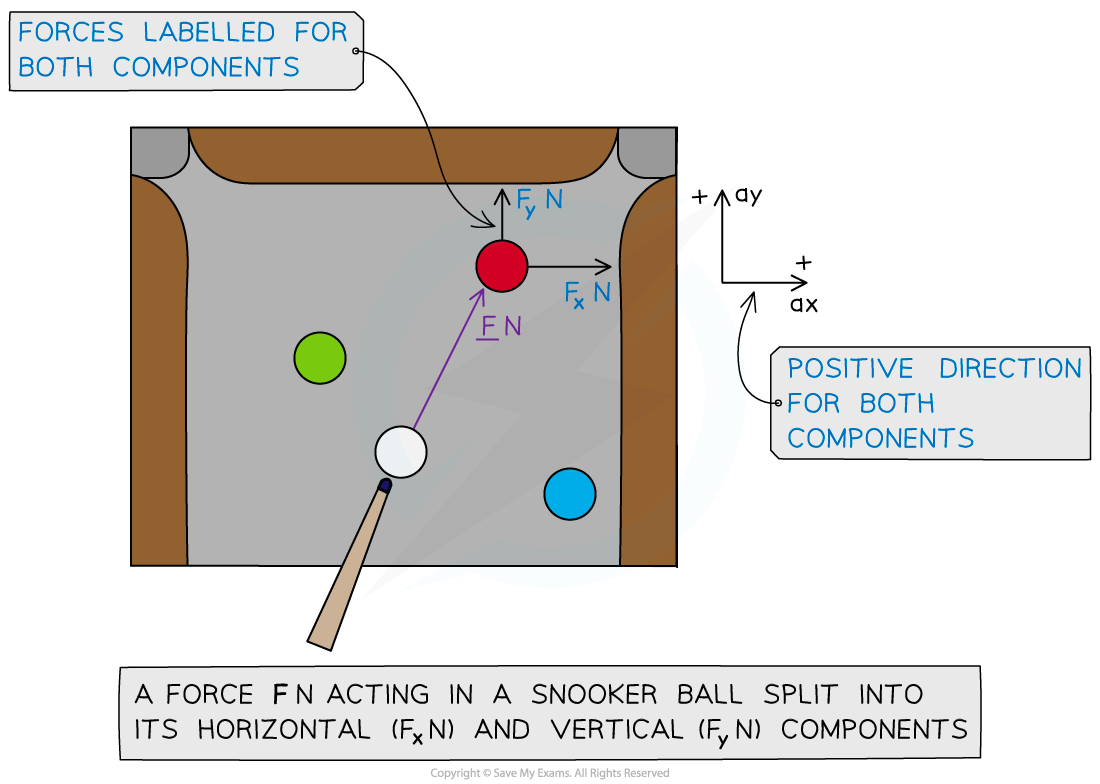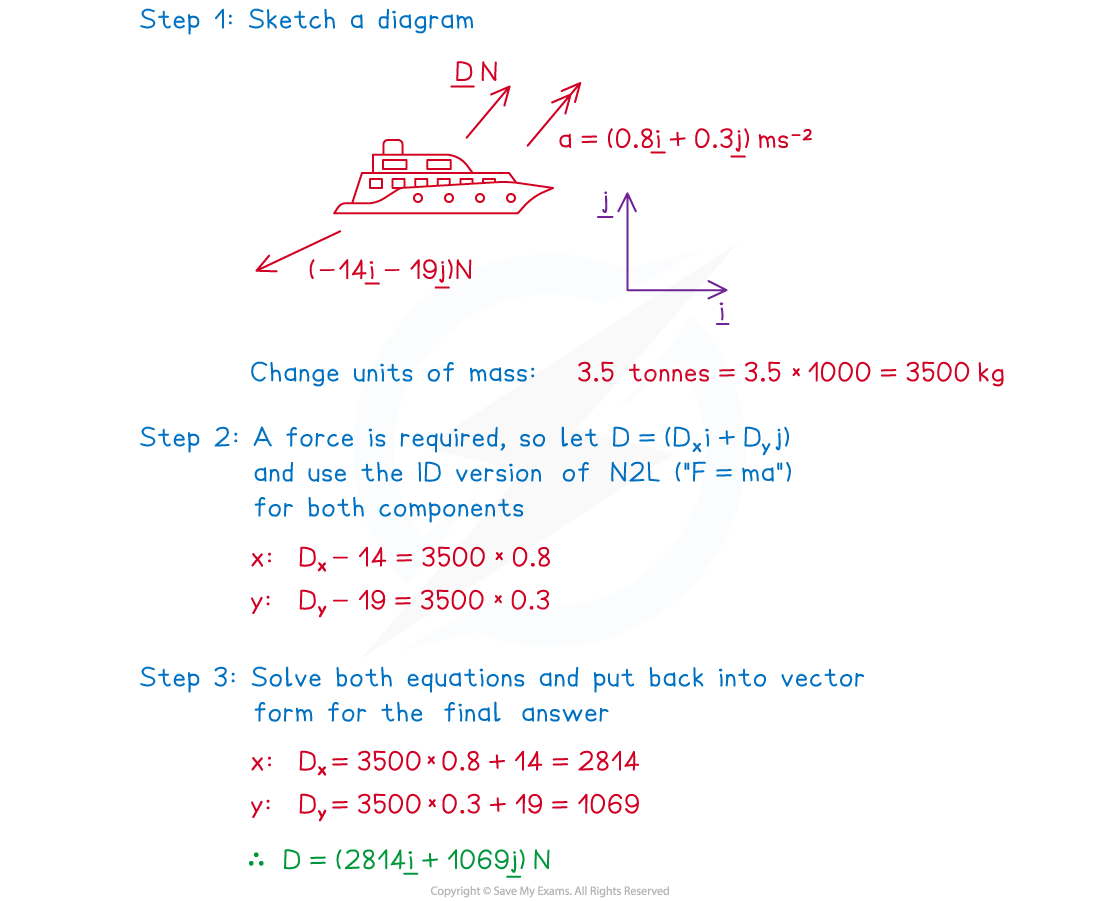- 翰林提供学术活动、国际课程、科研项目一站式留学背景提升服务!
- 400 888 0080
AQA A Level Maths: Mechanics复习笔记3.2.5 F = ma - Vector Notation
F = ma - Vector Notation
How is Newton’s Second Law (N2L) used with vectors?
- The resultant force (F) and acceleration (a) are vectors
- For forces and motion in two dimensions, F N and a m s-2 will be made up of two components – a horizontal (x-) component and a vertical (y -) component
- Displacement , velocity and weight are also vector quantities
- Time and mass are scalar quantities
- Vectors appear in bold (non-italic) font in textbooks, on exam papers, etc (i.e. F, a) but in handwriting should be underlined (i.e. F , a )
What notation is used for forces as vectors?

When do I use F = ma (N2L) in vector/2D form?
How is Newton’s Second Law (N2L) used with problems involving weight?

- Treating the two dimensions separately means weight only needs to be considered when looking at the vertical ( y-) direction
- Most 2D/vector problems are based on a bird’s-eye view – the two dimensions being left/right and forwards/backwards, so the up/down (third) dimension where weight would apply, is often not involved

How do we apply Newton’s Second Law (F = ma) in problems involving vectors?
- Step 1. If necessary, draw a diagram and label all forces acting on the particle(s)
- label the i and j directions and any other useful information.
- If a diagram is given, add any missing information to it.
- Step 2. Taking each dimension/component at a time use F = ma
- If there is more than one particle involved you may have to do this for each
- Step 3. Solve the equations for each component and put the final answers back into vector notation
- In some harder problems simultaneous equations may arise
Worked Example


Exam Tip
- If not given in the question, draw a diagram; label all forces and the positive direction for both components.
- Add to a diagram if given one, do not assume it is complete.
- Write a list of the quantities that are given in a question and another list of those you are asked to find. This will help you decide which equation(s) to use.
- A third list of the quantities you are not concerned with can help as these may be used to find intermediate results.
- Unless told otherwise, use g = 9.8 m s-2 and round your final answer to two significant figures.
- Some questions may direct you to use g = 10 m s-2 in which case round your final answer to one significant figure.
转载自savemyexams

最新发布
© 2025. All Rights Reserved. 沪ICP备2023009024号-1










